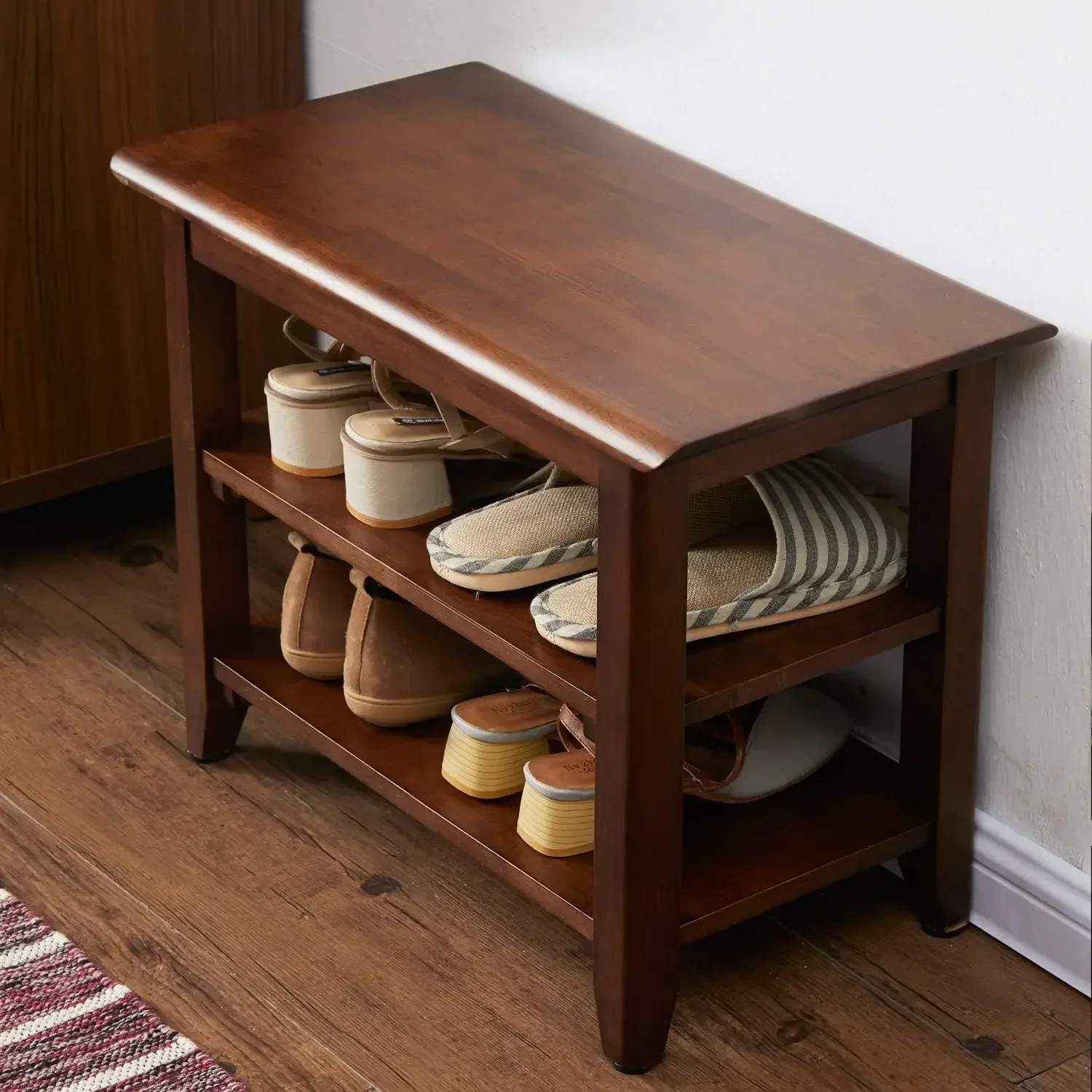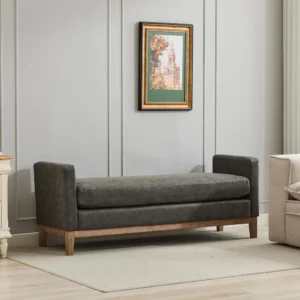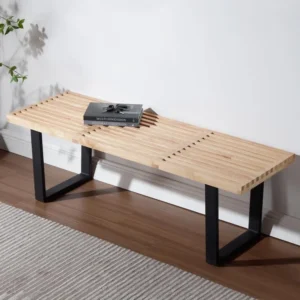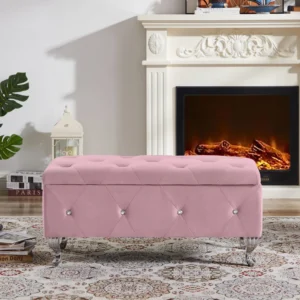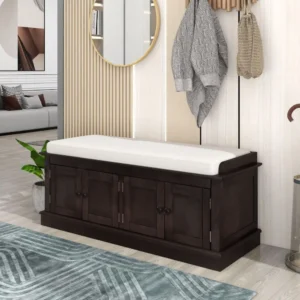Introduction: Why a Rustic Bench is Perfect for Your Hallway
A rustic bench brings warmth and character to your hallway like few other furniture pieces can. The hallmark of truly rustic benches includes weathered wood with visible grain, natural imperfections, and handcrafted elements that tell a story. These pieces often feature reclaimed materials, distressed finishes, and simple, sturdy construction that harkens back to simpler times.
Beyond their aesthetic charm, hallway benches serve as the perfect marriage of function and style. They transform an otherwise transitional space into a welcoming area that sets the tone for your entire home. A well-chosen bench doesn’t just fill space—it enhances how your home feels and functions.
The benefits of adding a rustic bench to your hallway include:
* Practical seating for putting on and removing shoes
* Valuable storage space for everyday items
* A defined entryway zone that welcomes guests
* A stylish statement piece that showcases your design aesthetic
* A natural gathering spot that grounds your home’s entrance
At Nested Goods, we believe your entryway should perfectly balance practicality with beauty—our “Where Function Meets Style” philosophy in action. The right rustic bench can completely transform your hallway from a simple passageway into a functional, inviting space that reflects your personal style while serving your daily needs.
As we explore various rustic bench ideas, consider which features would best serve your specific hallway needs, whether you’re drawn to farmhouse simplicity, industrial edge, or primitive charm. The perfect rustic farmhouse bench designs await to transform your entryway.
Understanding Your Hallway Space Before Choosing a Bench
Before falling in love with any particular bench style, take time to understand your hallway’s unique dimensions and needs. This preparation ensures you’ll select a piece that fits beautifully without disrupting your home’s flow.
Start by measuring your hallway carefully:
* Length: Determine the available wall space for your bench
* Width: Ensure enough clearance for comfortable passage (aim for at least 36 inches of walking space)
* Height: Consider ceiling height and any wall features like wainscoting
* Doorways: Note the swing path of any doors to avoid blockages
Your hallway’s primary function should guide your bench selection. Ask yourself: Do you need seating for a growing family? Are you looking primarily for storage to control clutter? Or is your main goal to create a stylish focal point?
For narrow hallways, which present special challenges, consider slimmer benches with a depth of 12-15 inches rather than the standard 16-18 inches. Corner benches can maximize awkward spaces, while wall-mounted options create an airy feel by revealing floor space underneath.
| Bench Size | Length | Typical Depth | Best For |
|---|---|---|---|
| Small | 30-36” | 12-15” | Narrow hallways, apartments |
| Medium | 42-48” | 15-18” | Average family homes |
| Large | 60+” | 16-20” | Spacious entryways, large families |
Remember that the right bench can actually make a small hallway feel more purposeful and organized rather than crowded. By choosing proportional pieces and incorporating storage, even compact entryways become more functional.
When selecting your bench, always consider how it will interact with your existing décor and architecture. The best choices complement your home’s style while solving practical challenges. For more specific guidance on furniture placement in tight spaces, explore our advice on rustic furniture for narrow spaces.
Classic Farmhouse Rustic Bench Ideas
The timeless appeal of farmhouse rustic benches lies in their honest simplicity and practical design. These pieces feature straightforward construction with an emphasis on function, often showcasing planked tops, spindle legs, and weathered finishes that tell a story of use and history.
Traditional farmhouse benches typically feature:
* Simple, sturdy construction with visible joinery
* Planked wood tops that showcase natural grain patterns
* Painted bases with distressed or worn edges revealing wood beneath
* Practical proportions designed for everyday family use
* Minimal ornamentation beyond perhaps simple turnings or cutouts
The most authentic farmhouse benches are crafted from solid woods like pine, oak, or maple. Pine offers affordability and takes distressing techniques beautifully, while oak provides exceptional durability with prominent grain patterns that enhance the rustic aesthetic. For genuine character, reclaimed barn wood brings unmatched authenticity with its nail holes, weathered patina, and rich history.
Finish options for farmhouse benches include milk paint in muted colors (whites, creams, blues, or greens), whitewash techniques that allow wood grain to show through, or simply sealed natural wood that darkens beautifully with age. The best finishes look as though they’ve evolved over decades of loving use.
When styling a farmhouse bench, pair it with complementary elements like galvanized metal containers for umbrellas, simple cotton or burlap cushions, and woven baskets underneath. A painted wooden sign or wreath above adds the perfect finishing touch.
For hallways requiring extra functionality, many farmhouse style benches for entryways incorporate features like high backs with coat hooks or lower shelves for shoe storage while maintaining their charming simplicity. Browse our collection of farmhouse entryway benches to find pieces that combine authentic character with practical everyday function.
Industrial Rustic Bench Ideas for Modern Hallways
Industrial rustic benches bring an edgy, contemporary twist to traditional rustic styling. These designs celebrate the beauty of raw materials and utilitarian construction while maintaining the warmth of rustic wood elements. The result is a perfect bridge between modern architecture and timeless natural materials.
The hallmarks of industrial rustic benches include:
* Bold combinations of wood and metal elements
* Visible hardware like bolts, rivets, or pipe fittings
* Straightforward, no-nonsense construction techniques
* Raw or minimally finished materials that showcase natural character
* Angular designs with strong visual presence

Popular material combinations include live edge wood slabs paired with blackened steel frames, reclaimed barn wood supported by cast iron pipe legs, or thick timber tops with exposed metal brackets. These pairings create visual tension between organic and manufactured elements.
Industrial rustic benches work particularly well in homes with contemporary architecture, open floor plans, or urban settings. They provide the perfect counterpoint to sleeker furnishings by adding texture and character without feeling too quaint or precious.
When selecting an industrial rustic bench, look for quality construction with proper reinforcement at stress points. Metal elements should be properly finished to prevent rust or wear, while wood components should be sealed appropriately for high-traffic entryway use.
To complete the look, consider pairing your bench with complementary accessories:
* Wall-mounted coat hooks in matching metals
* Concrete or metal planters with structural plants
* Edison-style bulb lighting fixtures
* Natural fiber rugs with geometric patterns
The versatility of industrial rustic design makes these benches particularly adaptable to changing décor trends. By combining timeless materials with contemporary forms, they create a look that feels both current and enduring. For more comprehensive guidance on creating a cohesive entryway design, explore our guide to creating your dream rustic entryway.
Log Cabin & Primitive Rustic Bench Designs
For those seeking maximum rustic impact, log cabin and primitive style benches make bold statements in any hallway. These substantial pieces celebrate wood in its most natural form, often featuring minimal processing and showcasing the tree’s original character.
Primitive rustic benches typically include:
* Chunky proportions with substantial heft
* Minimal refinement that preserves natural edges and textures
* Visible tool marks from hand-hewing or chainsaw carving
* Organic shapes that follow the wood’s natural contours
* Preserved knots, burls, and other “imperfections” as design features
The most striking examples use live edge slabs, where the natural edge of the tree is preserved, or half-log construction that celebrates the tree’s original round form. These benches become instant conversation pieces while providing practical seating and a connection to nature.
Woods like cedar, hickory, and walnut work beautifully for primitive benches. Cedar offers natural resistance to insects and moisture along with its distinctive aroma. Hickory provides exceptional strength and dramatic coloration with its contrasting heartwood and sapwood. Walnut brings rich, dark tones and beautiful grain patterns that develop character as they age.
Finish options for primitive benches typically emphasize protection while maintaining the wood’s natural appearance. Hand-rubbed oil finishes penetrate the wood to enhance grain patterns while providing moderate protection. For higher-traffic areas, clear polyurethane or marine-grade finishes offer greater durability without significantly altering the wood’s appearance.
While these benches excel as statement pieces, they can still incorporate practical features. Look for designs with natural nooks for storage or consider pairing with baskets and hooks to create a complete entryway system. Explore our collection of wood entryway benches to find exceptional examples that combine raw natural beauty with everyday functionality.
Smart Storage Solutions in Rustic Hallway Benches
The hallmark of truly great entryway furniture is its ability to solve multiple challenges simultaneously. Storage benches shine in this regard, offering comfortable seating while taming hallway clutter through intelligent organization features.
Different storage configurations address specific organizational needs:
Open Cubby Benches
* Provide easy access to frequently used items
* Allow shoes to dry naturally after wet weather
* Create display opportunities for decorative baskets or containers
* Work well for families needing individual cubbies for each member
Lift-Top Storage Benches
* Conceal clutter completely within a hidden compartment
* Provide dust-free storage for seasonal items or infrequently used gear
* Offer maximum storage capacity with minimal visual complexity
* Work well for storing bulky items like winter blankets or sports equipment
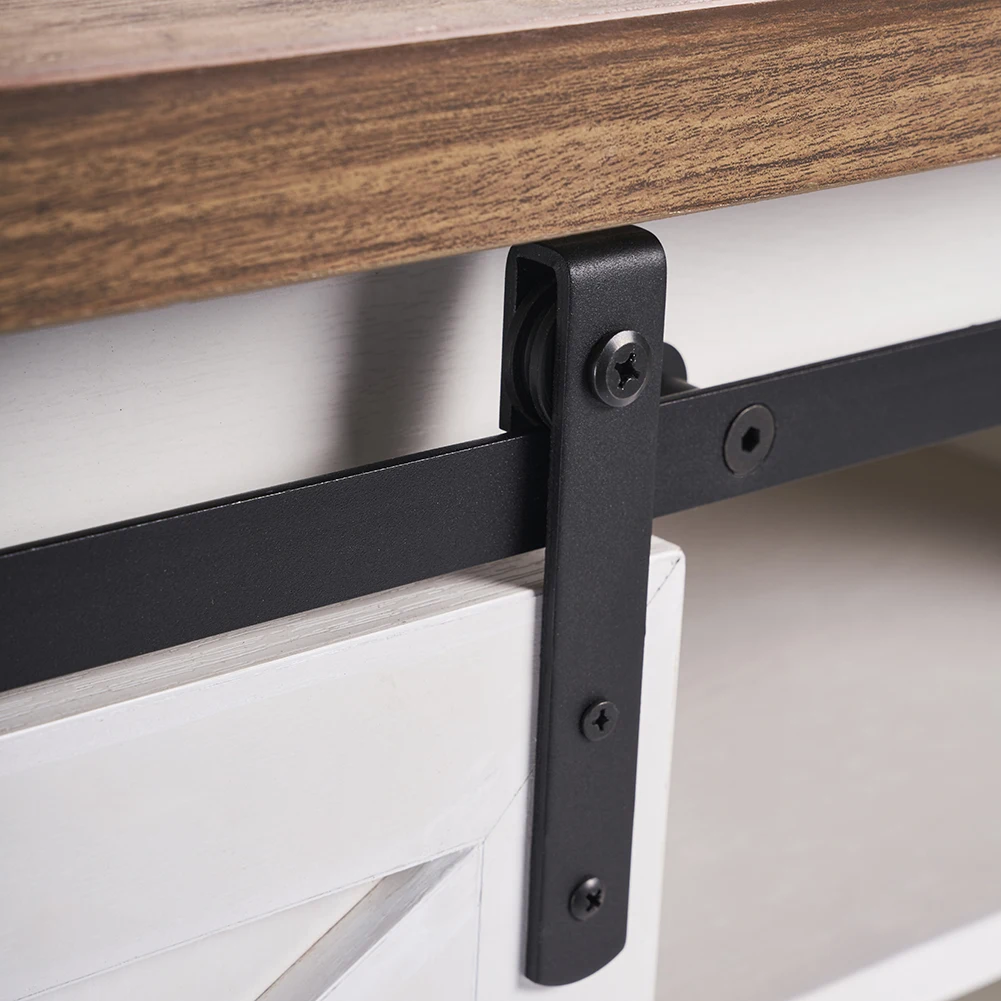
Drawer Benches
* Keep small items organized and easily accessible
* Prevent items from getting buried under larger pieces
* Allow for categorization of gloves, scarves, and other accessories
* Provide gentle opening mechanisms that prevent slamming
Combination Storage Designs
* Offer tailored solutions for complex organizational needs
* Typically feature drawers above with open storage below
* Maximize functionality while maintaining an uncluttered appearance
* Create natural zones for different types of items
When selecting a storage bench, consider the specific items you need to organize. Families with children might prioritize low, accessible cubbies for shoes and backpacks, while those in snowy climates might need waterproof boot trays beneath an open bench design.
Quality construction becomes especially important for storage benches with moving parts. Look for solid wood drawers with dovetail joints, smooth-operating full-extension glides, and sturdy hinges on lift-tops that won’t fail with repeated use. Soft-close mechanisms add a touch of luxury while preventing pinched fingers and slamming.
For maximum organization, consider accessories that enhance your bench’s storage potential. Custom-fit baskets, dividers, or cushions with hidden pockets can further refine your storage capabilities. Explore our collection of entryway bench storage options or discover additional inspiration in our guide to top storage bench designs for entryways.
Upholstered Rustic Benches for Comfort and Style
Upholstered elements soften the rugged character of rustic benches, creating inviting seating that balances comfort with rustic charm. These hybrid designs offer a perfect middle ground for homes transitioning between design styles or for those seeking rustic appeal without sacrificing comfort.
Popular upholstery approaches for rustic benches include:
* Tufted seat cushions atop wooden bench bases
* Fully upholstered seats with exposed wooden legs
* Hinged lift-top storage benches with padded lids
* Bench and ottoman combinations for flexible seating
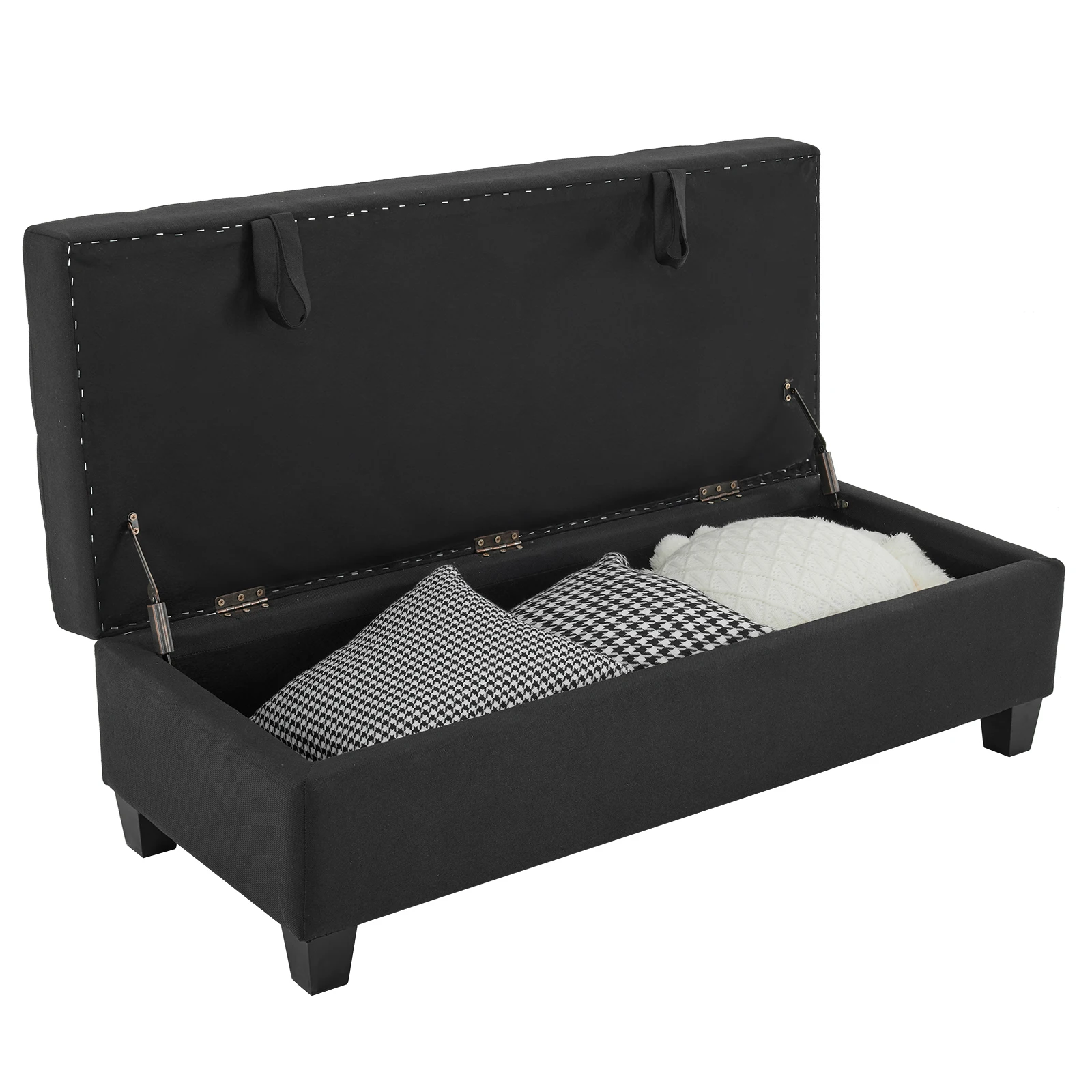
When selecting fabrics for hallway bench upholstery, durability becomes paramount. Consider these practical options:
| Fabric Type | Durability | Cleaning | Best For |
|---|---|---|---|
| Leather | Excellent | Wipes clean | High-traffic areas |
| Canvas | Very good | Spot cleaning | Casual settings |
| Performance fabric | Excellent | Stain-resistant | Homes with children |
| Wool blend | Good | Vacuum regularly | Sophisticated look |
Natural materials like leather and canvas develop attractive patinas over time, complementing the aged character of rustic wood. For contemporary spaces, consider textured fabrics in neutral tones that highlight the wood’s natural beauty without competing visually.
Color selection dramatically influences how rustic your bench appears. Traditional rust, brown, and forest green tones enhance rustic character, while crisp whites, grays, or blues create a more modern farmhouse aesthetic. Pattern can also play a role—subtle ticking stripes or small-scale plaids reference traditional rural textiles without overwhelming the design.
For maximum longevity, look for removable cushions or slipcovers that can be cleaned or replaced as needed. This feature is particularly valuable for high-traffic entryways or homes with children and pets.
The beauty of upholstered rustic benches lies in their versatility—they easily complement both traditional and contemporary décor while providing genuine comfort for everyday use. Browse our collection of cushioned entryway benches to discover options that blend rustic character with inviting comfort.
Small Space Rustic Bench Ideas for Narrow Hallways
Limited hallway space doesn’t mean sacrificing style or functionality. With thoughtful selection, even the narrowest entryway can accommodate a rustic bench that enhances rather than overcrowds the space.
Key considerations for small hallways include:
* Scale-appropriate width (30-36 inches is ideal for many narrow spaces)
* Slimmer depth (12-15 inches versus the standard 16-18 inches)
* Visual lightness through open designs or raised legs
* Multi-functionality to maximize value in limited square footage
* Proper proportion relative to wall length and ceiling height
Space-efficient rustic bench designs include:
* Wall-mounted flip-down benches that fold away when not in use
* Corner benches that utilize often-wasted corner spaces
* Nesting benches with smaller sections that tuck underneath
* Floating benches with open space beneath for visual lightness
* Bench/console table hybrids with minimal depth
In small spaces, every inch matters. A bench that’s too deep can make passage difficult, while one that’s too wide might overwhelm the available wall space. The ideal small-space bench maintains enough seat depth for comfort (at least 12 inches) while keeping the overall footprint minimal.
Visual tricks can help a compact bench make the right impact. Consider pieces with lighter-toned wood, open slat designs, or raised legs that reveal floor space beneath. These features create an airier feel that prevents the bench from visually weighing down a small entryway.
Multi-functional designs prove particularly valuable in compact areas. Look for benches with hidden storage, pull-out sections, or convertible features that adapt to different needs. Even simple designs can incorporate hooks above or baskets below to maximize organizational capacity.
For especially challenging spaces, consider custom solutions that fit your exact measurements. A bench built to your specific dimensions ensures no wasted space while addressing your unique storage and seating needs. Learn more about optimizing tight entryways with our guide to space-saving hallway benches or browse our collection of narrow entryway benches designed specifically for compact spaces.
DIY Rustic Bench Projects for Creative Homeowners
Creating your own rustic bench allows for complete customization while often reducing costs. With basic tools and some woodworking knowledge, you can craft a one-of-a-kind piece perfectly suited to your space and personal aesthetic.
Here are three achievable DIY bench projects ranging from beginner to intermediate skill levels:
Reclaimed Pallet Bench (Beginner)
* Materials: 2-3 wooden pallets, sandpaper, wood sealer, screws
* Tools: Drill, saw, sander
* Time: 3-5 hours
* Process:
1. Disassemble pallets and remove nails
2. Sand all boards thoroughly to prevent splinters
3. Cut and arrange boards for seat and legs
4. Assemble using screws and wood glue
5. Sand edges and apply protective sealer
Hairpin Leg Bench with Dimensional Lumber (Beginner)
* Materials: 2×12 lumber, hairpin legs, stain, polyurethane
* Tools: Drill, sander, basic measuring tools
* Time: 2-4 hours
* Process:
1. Cut lumber to desired length
2. Sand all surfaces progressively (80 to 220 grit)
3. Apply stain or finish of choice
4. Attach hairpin legs using included hardware
5. Add protective topcoat if desired
Timber-Frame Bench with Storage (Intermediate)
* Materials: 4×4 posts, 1×10 boards, hinges, stain, clear finish
* Tools: Drill, circular saw, kreg jig, chisel, measuring tools
* Time: 6-8 hours
* Process:
1. Create frame from 4×4 posts with lap joints
2. Build storage box from 1×10 boards
3. Attach hinged top for access to storage
4. Sand all surfaces and edges
5. Apply stain and protective finish
When working with new wood for a rustic project, consider these aging techniques:
* Steel wool and vinegar solution for gray weathered look
* Random distressing with chains, hammers, or screws
* Tea staining for aged patina
* Milk paint with selective sanding for worn edges
Safety remains paramount for DIY seating projects. Ensure structural integrity by using proper joinery techniques and reinforcements at stress points. Test weight capacity before regular use, and consider adding diagonal bracing for additional stability.
While sourcing materials, look beyond traditional lumber yards. Architectural salvage yards, farm auctions, and even curbside discards can yield authentic rustic elements with genuine age and character. For those seeking more guidance on selecting the right materials and designs, our guide on choosing rustic entry furniture provides valuable insights for both DIY and purchased pieces.
Materials That Make a Rustic Bench Authentic
The soul of a truly rustic bench lies in its materials. Understanding wood types and finish options helps you select pieces with genuine character and appropriate durability for entryway use.
| Wood Type | Characteristics | Best For | Maintenance Level |
|---|---|---|---|
| Pine | Soft, knotty, affordable | Painted finishes, country style | Moderate (dents easily) |
| Oak | Durable, prominent grain, traditional | Heavy use areas, long-term investment | Low (highly resilient) |
| Reclaimed Barn Wood | Weathered patina, history, sustainability | Authentic rustic style, conversation pieces | Varies by condition |
| Cedar | Aromatic, naturally rot-resistant | Indoor/outdoor transition spaces | Low (naturally protective) |
| Hickory | Exceptional strength, distinctive grain | Statement pieces, generational furniture | Low (extremely durable) |
Beyond the wood itself, finish choices dramatically impact both appearance and performance. Traditional oil-based finishes like tung oil or Danish oil penetrate the wood grain, enhancing natural beauty while providing moderate protection. These finishes develop character over time and can be easily refreshed without stripping.
For painted finishes, milk paint and chalk paint create authentic rustic appearances, especially when distressed to reveal wood underneath. These low-sheen finishes complement rustic textures while allowing easy touch-ups as wear occurs. Clear protective topcoats can be added for high-traffic areas without changing the rustic aesthetic.
Metal elements play an important supporting role in many rustic benches. Look for:
* Hand-forged iron hardware with visible hammer marks
* Blackened steel with a matte, non-reflective finish
* Antiqued brass or copper accents that will patina naturally
* Galvanized metal elements for industrial rustic looks
The most authentic rustic pieces often combine multiple materials with complementary aging properties. Wood develops deeper color and smoother touch with handling, while metals develop patinas that reveal use patterns. This synchronized aging creates pieces with genuine character that improves rather than deteriorates over time.
For hallway benches specifically, consider durability factors like moisture resistance (for wet boots and umbrellas) and scratch resistance for daily use. The ideal materials balance authentic rustic character with practical performance suited to your household’s specific entryway challenges.
Entryway Bench with Cushion, Mudroom Bench with Cushion, Shoe Bench for Entryway
$1,186.63 Select options This product has multiple variants. The options may be chosen on the product pageCorner Entryway Bench, Entryway Bench with Cushion, Modern Entryway Bench, Shoe Bench for Entryway
$476.34 Select options This product has multiple variants. The options may be chosen on the product pageModern Entryway Bench, Wood Entryway Bench, Wood Mudroom Bench
$497.69 Select options This product has multiple variants. The options may be chosen on the product pageEntryway Bench with Cushion, Small Entryway Bench
$466.79 Select options This product has multiple variants. The options may be chosen on the product pageEntryway Bench with Cushion, Mudroom Bench with Cabinets, Shoe Bench for Entryway, Shoe Bench with Cushion
$991.71 Select options This product has multiple variants. The options may be chosen on the product pageFarmhouse Entryway Bench, Modern Entryway Bench
$1,514.84 Select options This product has multiple variants. The options may be chosen on the product page
Styling Your Rustic Hallway Bench: Creating a Cohesive Look
A well-styled bench becomes the centerpiece of a welcoming hallway vignette. The key lies in balancing decoration with functionality to create an entryway that’s both beautiful and practical for daily use.
Start by considering these foundational styling elements:
* Wall backdrop treatments (shiplap, beadboard, or textured wallpaper)
* Overhead lighting (pendant lights or flush mounts with rustic character)
* Floor coverings (natural fiber rugs, vintage runners, or durable indoor/outdoor options)
* Wall décor (mirrors that expand the space visually, artwork, or coat hooks)
For the bench itself, layering creates visual interest:
* Base layer: Baskets beneath or beside the bench for shoes, pet supplies, or seasonal items
* Comfort layer: Cushions or pillows in complementary textures and patterns
* Accent layer: Throw blankets for both decoration and practical warmth
* Personal layer: Small decorative elements that reflect your personality
Seasonal styling keeps your entryway fresh throughout the year:
Spring/Summer
* Lightweight cotton or linen cushions in bright or pastel hues
* Natural elements like potted herbs or cut garden flowers
* Woven baskets for farmers market trips or garden tools
* Light-colored throws for cool summer evenings
Fall/Winter
* Wool or faux fur cushions and throws in deeper, richer colors
* Lanterns or battery-operated candles for warm ambient light
* Pinecone or dried botanical arrangements
* Boot trays and umbrella stands for inclement weather
For a designer-worthy arrangement, follow the rule of three by grouping accessories in odd numbers, varying heights and textures within your display. This creates visual rhythm while maintaining an uncluttered appearance.
Consider vertical space as well, pairing your bench with complementary wall elements:
* A mirror positioned to reflect light and create the illusion of space
* A gallery wall of family photos or artwork in coordinating frames
* Wall-mounted storage like coat hooks, mail organizers, or key holders
* Floating shelves displaying seasonal décor or family mementos
For more specific guidance on accessorizing your bench throughout the seasons, visit our guide on decorating wooden benches where we share professional styling techniques for various bench styles.
Maintaining the Beauty of Your Rustic Hallway Bench
Proper care ensures your rustic bench remains beautiful for generations while developing the coveted patina that only comes with time and proper maintenance.
Regular maintenance should include:
* Dusting with a soft cloth or vacuum upholstery attachment weekly
* Wiping up spills immediately to prevent staining
* Checking and tightening hardware quarterly as wood naturally expands and contracts
* Inspecting for damage after heavy use or seasonal transitions
Different finishes require specific care approaches:
For Oil-Finished Wood:
* Clean with mild soap and water, drying thoroughly
* Apply fresh oil annually to nourish wood and maintain protection
* Use coasters or mats under wet items to prevent water rings
For Painted or Sealed Wood:
* Clean with slightly damp cloth and mild cleaner
* Touch up chips or scratches promptly to prevent moisture penetration
* Avoid harsh chemicals that can damage protective finishes
For Upholstered Elements:
* Vacuum regularly using upholstery attachment
* Treat stains according to fabric type recommendations
* Consider scotchgard treatment for new cushions
* Rotate removable cushions to ensure even wear
Common hallway bench issues can be addressed before they become serious problems:
* Loose joints: Tighten hardware or reinforce with wood glue if needed
* Squeaks: Apply paste wax to moving wood connections
* Watermarks: Try mayonnaise or petroleum jelly left overnight
* Scratches: Touch up with matching stain markers or blend with furniture wax
Preventative measures significantly extend your bench’s lifespan:
* Use felt pads under decorative objects to prevent scratches
* Place boot trays nearby for wet or muddy footwear
* Apply furniture wax seasonally to create a protective barrier
* Keep benches away from direct sunlight or heating vents that can cause wood to dry and crack
With proper care, a quality rustic bench actually improves with age, developing deeper color, smoother surfaces, and the authentic character that makes rustic furniture so appealing. This patina of use becomes part of your family’s story, creating a meaningful heirloom that connects generations.
Where to Find Quality Rustic Hallway Benches
Finding the perfect rustic bench involves knowing where to look and what quality indicators to prioritize during your search.
Different shopping channels offer distinct advantages:
Specialty Furniture Retailers like Nested Goods provide:
* Curated selections with consistent quality standards
* Expert guidance for selecting the right piece
* Premium materials and construction methods
* Coordinating accessories and complementary pieces
* Detailed product information and support
Online Marketplaces offer:
* Wide variety of styles, sizes, and price points
* Convenience of at-home shopping
* Customer reviews and photos of pieces in real homes
* Range of both mass-produced and artisan options
* Competitive pricing and frequent sales
Artisan and Craft Sites feature:
* One-of-a-kind handcrafted pieces
* Direct connections with makers
* Custom options tailored to your space
* Support for independent craftspeople
* Unique materials and techniques
Vintage and Antique Sources provide:
* Authentic aged patina that can’t be replicated
* Sustainable reuse of existing materials
* Unique character and historical significance
* Often solid wood construction from old-growth timber
* Conversation pieces with interesting provenance
When evaluating quality online, look for these indicators:
* Detailed material descriptions (specific wood types, not just “wood”)
* Construction method information (joinery techniques, reinforcements)
* Weight capacity specifications
* Close-up images of joints, underside construction, and finish details
* Clear return policies and warranty information
Meaningful questions to ask retailers include:
* “What type of wood is used throughout the piece?” (Avoid terms like “select hardwoods”)
* “How are the joints constructed?” (Look for mortise and tenon, dovetail, or other proper joinery)
* “Is the bench assembled or does it require assembly?” (Pre-assembled often indicates higher quality)
* “What maintenance is recommended for long-term care?”
While initial price certainly matters, the true value of a rustic bench comes from its durability, timeless design, and ability to serve your family for decades. Investment pieces from quality-focused retailers often prove more economical long-term than cheaper alternatives requiring frequent replacement.
Will a Rustic Bench Work With Non-Rustic Home Decor?
One of the most appealing aspects of rustic benches is their remarkable versatility across different interior design styles. Rather than clashing with non-rustic décor, these pieces often provide welcome contrast and visual interest.
In modern interiors, a rustic bench creates a textural focal point amid sleeker furnishings. The organic warmth of wood softens contemporary spaces that might otherwise feel cold or sterile. For best results, choose cleaner-lined rustic pieces with minimal ornamentation and pair them with modern accessories in complementary tones.
Traditional homes benefit from rustic benches that introduce casual elements to balance formality. When paired with classic patterns like plaids or florals and traditional lighting fixtures, rustic wood grounds the space while preventing it from feeling too precious or untouchable.
For minimalist spaces, a carefully chosen rustic bench adds essential character without cluttering clean aesthetic lines. Look for pieces with beautiful natural grain but simple forms that echo minimalist principles of “less is more.” The texture becomes the decoration, requiring few additional accessories.
Transitional style—which bridges traditional and contemporary approaches—perfectly accommodates rustic elements. These versatile spaces benefit from rustic benches with moderately distressed finishes, balanced proportions, and subtle details that can swing either traditional or modern depending on surrounding furnishings.
Some effective design pairings include:
* Rustic bench + modern art + clean-lined sofa
* Rustic bench + traditional rug + updated lighting
* Rustic bench + industrial accents + contemporary color scheme
The key to successful integration lies in treating the rustic piece as a deliberate design choice rather than an outlier. Repeat wood tones elsewhere in the space (picture frames, lamp bases, or accessories) to create visual connections. Similarly, echo metal finishes from the bench hardware in lighting fixtures or decorative objects for cohesive design language.
How Do You Prevent a Rustic Bench from Looking Too Country?
While rustic and country styles share common elements, they aren’t synonymous. Rustic refers to natural materials, weathered finishes, and honest construction, while country style incorporates specific decorative motifs like roosters, apples, hearts, and other themed elements.
To achieve a refined rustic look that avoids crossing into country territory:
- Choose sophisticated silhouettes with clean lines over ornate details
- Select neutral upholstery without country-specific patterns like gingham or roosters
- Opt for natural or subtly distressed finishes rather than heavily painted surfaces
- Pair with contemporary lighting, modern art, or architectural elements
- Keep accessorizing minimal and purposeful rather than decorative
- Focus on quality materials and craftsmanship rather than decorative embellishments
Material combinations dramatically influence how rustic a piece appears. Metal and wood pairings read as industrial-rustic rather than country, while leather upholstery elevates rustic wood to a more sophisticated level. Natural stone elements like slate or marble can add unexpected elegance when paired with rustic wood.
Hardware choices significantly impact style perception as well. Replace decorative or themed hardware with simple black iron pulls, sleek stainless bars, or leather straps for a more current look. These small details have outsized influence on the overall impression.
The distinction between timeless rustic and dated country often comes down to restraint. Where country style might layer multiple patterns and decorative elements, refined rustic embraces negative space and lets quality materials speak for themselves. This subtle difference creates rustic pieces that complement contemporary life while honoring traditional craftsmanship and natural beauty.

